17 Best Study Techniques for College Success
Find your perfect college degree
Upon reaching college, students realize that their previous study habits in secondary school don’t cut it anymore. Your days are now filled with intensive reading and more rigorous discussions, and your exam results significantly impact your overall performance.
Unlike in high school, your college professors take you as a mature, independent individual who must work their way up through the student ranks. Because of how competitive college can get, students take all the college techniques they can get to succeed.
We’ll let you in on a secret: it’s only a matter of finding and applying the appropriate study techniques to survive the rigors of university life!
Planning and organizing are essential in college, particularly when studying and preparing for tests. Gathering all course materials and notes before they begin will ensure that they don’t miss anything.
Some would refer to the syllabi provided by their professors and make it their roadmap to the supposed topics covered for the course.
Study Smarter, Not Harder!
You will be more motivated and more efficient in achieving your goals if you develop good study habits and learning strategies. Check out the amazing benefits of incorporating study skills into your college life:
- Developing study skills is beneficial not only for the university but also for career success.
- Your confidence, competence, and self-esteem can be increased if you have good study skills. These skills can also help students counteract the stress of exams and deadlines.
- Develop effective study skills to save time studying and pursue other aspects of interest like sports and hobbies. Also, due to productive studying approaches, you could reduce the number of hours for study time.
- Good study skills will enhance your ability to learn new things and retain existing information.
- Study techniques can help students feel rewarded for their work.
Why Do You Need to Develop Your Study Skills?
- All students – whether they’re at the beginning of their undergraduate degree or doing a PhD – can develop these skills. By developing your study skills, you will be able to feel more in control of your college life. You can schedule and organize your time better. Lastly, you will not be afraid to face new challenges as you progress through your degree.
- The greatest enemy of effective study is stress, and feeling in control improves stress management.
- Students, at every stage of their education, often feel more pressured when they start a new course or increase their level of ranking in college. With adequate study skills, all these worries will dissipate as feelings of confidence and excitement will exceed feelings of pressure and worries.
- Many students who have not attended formal education for some time may feel like they are back to square one. However, when they are introduced to study skills for the first time, they typically recall what helped them in the past. Our foundation is built on this.
- It goes without saying that a number of study skills can be applied to the professional world. Developing good presentation and report-writing skills is an invaluable skill employers value.
17 Proven Study Techniques
1. Repetition Method
The study cycle is essential to every student so they can maximize opportunities to learn productively. This process has several parts that include previewing, joining the class, reviewing, studying, and assessing the student’s comprehension.
Even if every phase is already apparent, students skip some of the stages and miss several effective learning opportunities.
A typical example is when a learner fails to read before attending the lecture since the instructor teaches the same topic. Doing this will mean losing a chance to learn in various modes and gain the benefits of the repetition method they should get by simply reading in advance and attending class.
2. Pomodoro Technique

Creating a study schedule and finding the right study spot are also necessary. Some students apply the Pomodoro study method to manage their time efficiently.
This approach involves allocating a particular period, like 25 minutes, for every task and short breaks in between. Every task completed will be ticked off, ensuring that all the things written on the to-do list are covered.
This method focuses on the flow and eliminates interruptions, helping the learner to absorb the subject fully. The short breaks help in assimilation, giving ample time to process the portion covered before the interval.
College students need to be familiar with various study techniques and apply them every time they prepare for exams or do their homework.
3. Leitner Method
The widely used and effective study technique that every student applies when preparing for tests is using flashcards. This method started back in the 19th century and was corroborated by several studies that such a technique can improve active recall.
It develops the person’s ability to remember significant pieces of information for a prolonged time. The most common study solution that makes use of flashcards is called the Leitner System.
This method requires flashcards, which will test how well the student remembers the text or graphics on every card. It helps them focus more on the cards they are having difficulty with.
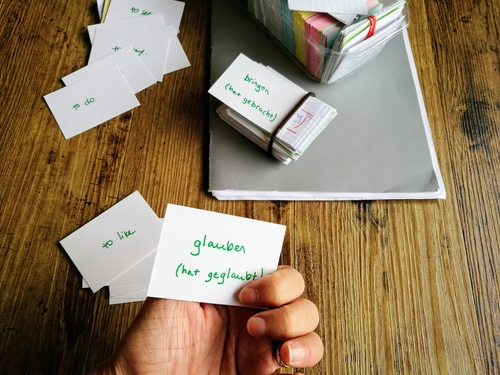
The cards used will hold different text on both sides and be placed in different labeled boxes as they go through the stack every day. Each card will be moved from the “unfamiliar box” to the “very familiar box,” depending on how well the student has familiarized the flashcards.
Every box has a variety of repetition intervals. Should the student make an incorrect answer, they will place the card in the previous box.
Through this technique, one can ensure that they’re focusing more on the tough part of the lesson, lessening their focus on topics they’ve already mastered and efficiently using their study time.
4. Notebook Method
Some professors may inevitably use technical terms or highfalutin words that make students struggle to understand the subject matter. Hence, when learners study, they tend to spend so long on that particular topic.
Some students apply the “Notebook method” by Richard Feynman, a known theoretical physicist, to resolve this issue. Like other undergraduates, he also experienced such difficulties in some of his lessons. So, he came up with an effective study technique that involves breaking down his thoughts and writing them in a notebook.
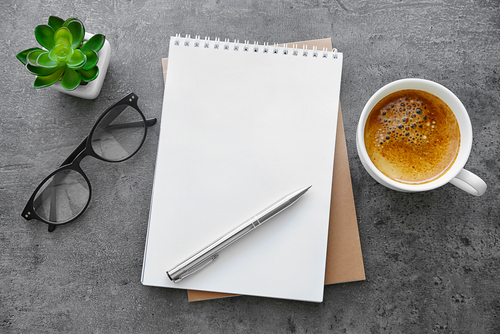
While he was at Princeton, he would write down what he didn’t understand in every subject. And he would later add new details to it if he came across any related information that could expand his understanding of the topic.
Additionally, Feynman was able to identify the learning gaps while he organized all his notes to make them cohesive content.
Today, several students have adapted to such methods to help them grasp the concept of their difficult subjects and make it easy to recall when they study for test prep.
When writing down all the information gathered, the student can identify what else is missing and gauge how well they know the topic. This is useful when they sort through other sources to find the details lacking in the subject.
5. The Interleaving Method
Students get back to their notes and review the practice tests, but most don’t follow a systematic flow of which topics to cover. Some would only deal with the most challenging topics and ignore the easy ones. Practice makes perfect, the adage says, and rightly so!
Going over your lecture notes significantly helps achieve better performance. There are multiple ways to work on a problem or practice a skill, such as blocking and interleaving methods.
The blocked practice approach involves mastering one subject or skill at a time. The student must master topic A before moving to topic B, and so on. Several instructors have found this style convenient and straightforward. On the other hand, the interleaved practice approach is more of an unheard method.
Unlike in blocked style, where digesting one subject at a time, interleave practice uses a mix of relevant topics and learns them altogether. An excellent example is studying topics ABC all at once or just like a tennis player alternately working on the backhand, forehand, and volleys.
Despite the two techniques being considered useful, the interleaved method produces more promising results from numerous research studies. This is because mixing different topics in one study session can cover a broader area in a reasonably short period.
When the learning materials are interlaced, the learner can begin to notice the similarities and differences in the topics they’re tackling, leading to a more in-depth understanding of the subject. Studying the relevant types of difficulties during the learning process can significantly develop long-term retention since students are forced to absorb new topics more deeply.
6. Self-Test Strategy
In school, tests are used to assess what the students have learned. Before entering college, applicants have to take standardized tests like SATs and ACTs to evaluate their aptitude and knowledge. In every class lecture, professors hand out quizzes sporadically, making students caught off guard and getting low scores.
According to a study, when teachers give examinations regularly, students are most likely to study more and perform well in the semester. It develops their long-term retention.
When preparing for tests, days or weeks before that, some students self-quiz themselves as often as possible to help recall their lessons. They use their notes, materials, and books, filter the necessary information, and make a mock test to answer. Performing self-quizzes repeatedly will also assess which topics they find hard to retain and concentrate on more.
Repeated study can improve the student’s ability to retain knowledge. When self-tests are done using different formats, such as multiple choice and short answers, they tend to achieve higher scores.
7. Highlighting Method
Every student has probably used the highlighting method when they study. Their textbooks are filled with vibrant colors of highlighters, isolating important information that they need to remember.
According to psychology experts, this technique typically appeals to students since it is quick, no extra training is required and doesn’t require them to spare more time than what is already intended for reading the book.
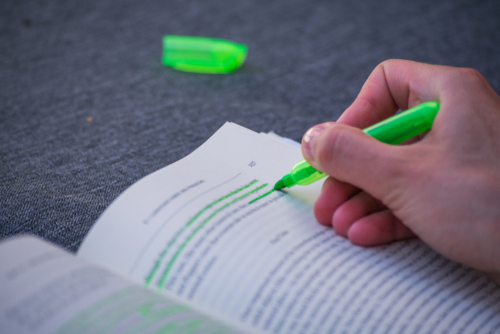
The researchers discussed that highlighting presents an isolation effect, making the highlighted text stand out from others and easily recalled by the reader. When studying a subject involving intensive reading, underlining the essential information will help the learner quickly remember such particular content.
This technique is only useful if the student has efficiently marked the relevant content. Overmarking the textbook will also create confusion and make it less distinguished from other texts.
Students will be less likely to recall highlighted information if it is not singled out. Hence, choosing the appropriate words to underline is crucial to the efficacy of the method.
There may be several professionals who are still skeptical about the usefulness of the highlighting method. Many students have become accustomed to this study technique because it is convenient and somehow helps them. Therefore, learners will continue to apply this popular technique despite its uncertainties.
8. Summarization
Usually, college students are required to do tons of reading in most of their subjects. When examination comes, these learners invest a significant amount of time reading long passages to extract important ideas. This involves eliminating less essential sentences and linking ideas within the passage.
To successfully come up with a cohesive and brief version, students create summaries of target information. This study technique has been applied by several students, especially those with courses that necessitate rigorous reading like medical, business, and law.
The student has to thoroughly understand the entire passage and organize the main ideas before creating a summary. They can either write it in small pieces of information or more extensive content. This approach is useful when students prepare for exams since they can write down only the needed information they’ve learned for the entire lecture.
Moreover, summarization improves the students’ research and comprehension skills when they are extracting pertinent details. These abilities are all key ingredients every time they prepare for upcoming tests.
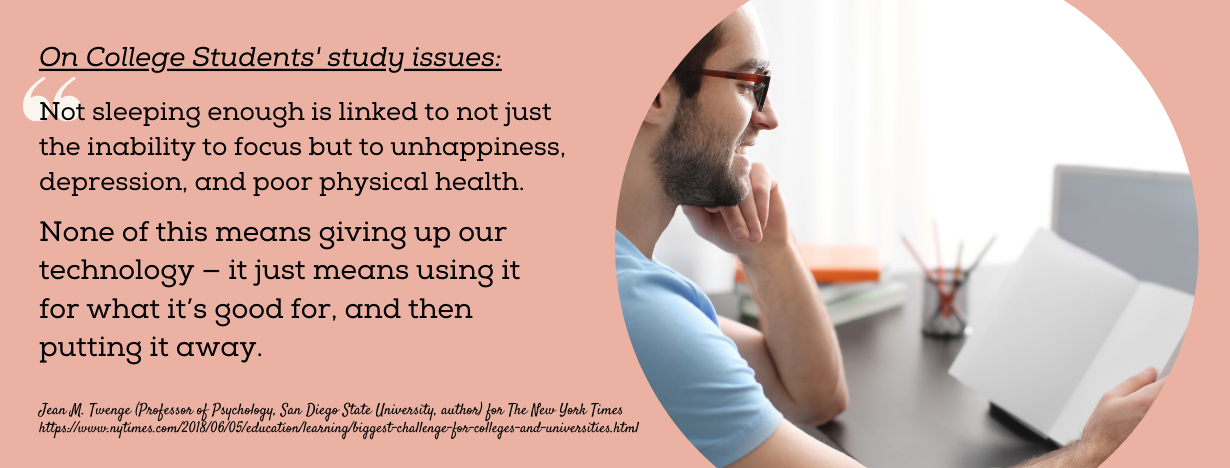
9. Changing Study Locations
Moving around or changing the study locations will improve the student’s mood when they study. At times, the student may be more focused when they’re at the library in the morning than in their room at night. Several elements can disrupt concentration, and some of them get easily distracted by moving parts around them. Hence, studying in different locations is helpful.
According to several studies, changes in the environment can act as retrieval cues for activities relevant to the subject or topic being covered by the student. It helps them remember important details and create mental representations. All of these elements help improve memory recall.
On the other hand, some students can also survive studying in places with blaring sounds or bustling with people, such as coffee shops. These individuals have the talent to tune out their environment while focusing on their tasks. Regardless of the kind of study space the student chooses, moving around will considerably help their mood.
10. Study Group Technique
Joining study groups is a useful learning technique for the majority of students. It is a brilliant opportunity for them to work collaboratively in groups. This way, they can quickly grasp the subject instead of doing it alone at their table.
When they’re not in the lecture room, reading the material verbatim and rephrasing it to some of their classmates allows them to create their material and develop their understanding of the subject.

In one of the studies about peer learning as a practical learning approach, the findings presented that this method is useful since it enables students to make their lecture notes. Generally, when learners listen to their professor talk and jot down notes simultaneously, they focus on writing, making it difficult to understand the material fully.
When they are in a group study session, interaction dynamics occur in which students can completely absorb the discussion notes and write them on their own.
Furthermore, there are study groups where an experienced participant, such as a senior student or a professor, joins in to assist the discussion.
This makes the study technique more efficient, allowing the participants to contribute by sharing their knowledge and creating useful arguments about the subject. Therefore, the session turned out to be more productive and properly guided.
11. Mindfulness Meditation
Meditating before the study session makes a significant impact on the student’s study routine. Several research studies recommend meditation to improve attention span and lessen the anxiousness of the person.
Even for just a couple of minutes of meditation, it can already have a huge impact on concentration and performance. There are different ways to meditate; some people would attend a yoga class before studying.

As scientists would say, the brain, like any other muscle, requires regular exercise. Based on neuroscientific research, meditation is one of the best brain exercises for learning. This improves the individual’s ability to comprehend and assimilate information, cope with any situation, and foster personal growth.
These experts have also found that successful individuals use both the left and right brain hemispheres in synchrony. This brain synchronization can be achieved through meditation, allowing the person to transform all aspects of their life, particularly their ability to learn.
The rigors of college life inevitably take a toll, making the student distracted and unable to focus during study sessions. Consequently, learners are strongly encouraged to meditate to improve their academic performance and free their minds from academic pressures.
12. Background Music Technique
This technique takes you to quite a similar scenario to studying at a coffee shop, where the place is filled with relaxing music. It turns out this method has been scientifically proven after all! The popular theory connected with cognitive processing and music is the “Mozart Effect,” where one listens to Mozart to improve one’s intellectual ability.
But according to experts, any other classical music will have a similar effect. The important factor is to select the type of music that is different from the person’s preference, and it has to have a continuous melody. Pick a neutral kind of music with a repetitive tone and leave it playing softly.
It is common practice for students to listen to music while studying, answering homework, or reading because it dramatically improves their mood. Hence, music plays a significant role in their cognitive performance.
Scientists also emphasize that the type of music you listen to matters as well! An experiment showed that those who listened to sedative music performed better than those who listened to simulative music. At the same time, those who didn’t listen at all had the worst performance.
They’ve confirmed that stimulative music becomes a powerful distraction and disrupts cognitive processing more than the other type.
13. Retrieval Process
Several studies determined studying notes over and over, like reading the materials repeatedly without understanding, is not an effective learning technique. Reviewing or restudying doesn’t require the actual cognitive processes that tests need.
Particularly, during examinations, the student must recall memory information—no lecture notes or textbooks to refer to. Therefore, the more in-depth the student has learned the subject, the more they can remember the test’s information, leading to better scores.
Trying to remember what the person has learned, mentally or in writing, is known as the retrieval process. This approach involves reading through notes, lecture slides, and textbooks. Then, without a glimpse of those materials, the person will attempt to recover some information that readily goes into their brain.
After the recollection phase, the learner can check that information and refer it to their course materials, if these are correct; after, find the missing portions or sections unclear to them. They can repeat the process until they master the topic.
There were several studies conducted on the efficacy of the retrieval process as a learning technique. The outcome was conclusive that it is one of the most productive approaches that has been uncovered to date.
We’ve Got More Tips for You!
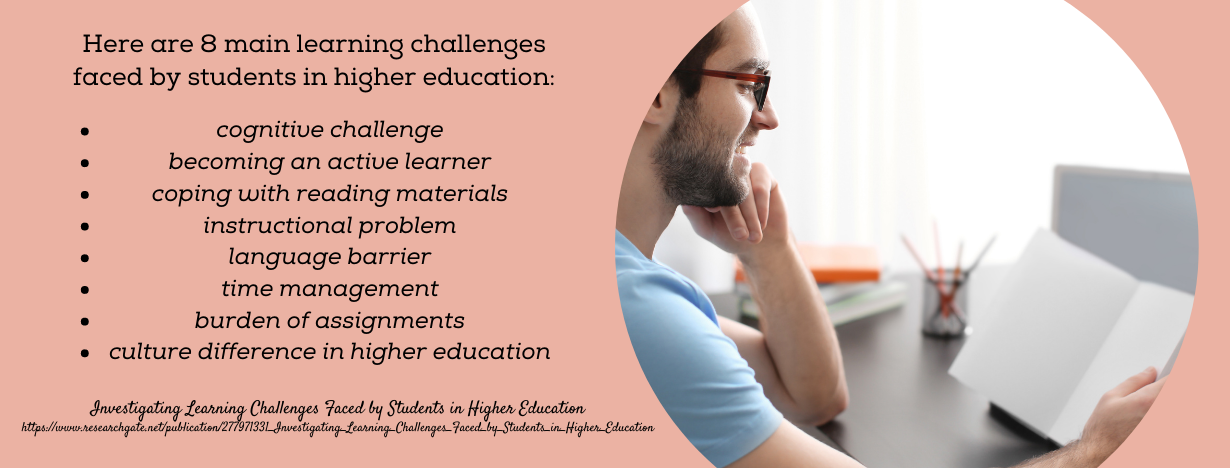
14. Fixing a Fitness Routine
The connection between physical fitness and brain performance can only be explained scientifically. Studies reveal that performing physical activities such as aerobics can physically change the brain for better performance on all dimensions. Physical exercise develops learning on various levels.
The chemical reactions that occur during these levels will prepare the mind to learn and make it retain information faster. Therefore, experts strongly recommend students engage in physical exercise to improve learning.
These activities don’t have to be strenuous! Brisk walking for an hour, done twice a week, will suffice. This is an excellent moderate workout for a week. The standard recommendation is to complete a maximum of 150 minutes per week or 30 minutes of moderate exercise five days a week.
Students don’t need to go heavy immediately; they can start mild exercises for a couple of minutes and gradually increase the intensity until they achieve their target.
There are several ways to keep active and not just by running, walking, or swimming. Performing household chores such as mopping, sweeping the yard, or raking leaves are valid activities that will not cause too much intensity and still make them sweat. Regardless of what activity they choose, it has to be done regularly.
15. Teach-Another-Learner Technique
Students tend to have better recall and memory skills when learning new things and expecting to share them with others. This is true because educators are expected to familiarize themselves with the subject and arrange essential parts to teach it to other people.
Furthermore, these students become more motivated and look for various techniques to recall and organize when expected to take in the teacher’s role.
The experiment results showed that just giving a simple suggestion to the students that they need to teach another learner has a significant effect on their mindset. They become inspired to use more practical methods to learn than those who are only preparing for a test.
Students also follow these practical learning techniques when they expect to assume the teacher’s role, like how teachers prepare to look for main points and organize them into a cohesive structure.
Implementing this technique may be best when the student studies in a group. Everyone can take turns and pretend to be a teacher, covering every element of the course material. This way, they all can improve their learning efficiency.
16. Try Metacognition
Students are aware of which study approach works best for them, and they can easily adjust to these techniques and environments as required. Identifying what learning technique is appropriate for an individual is also known as metacognitive strategy.
It involves thinking about learning, which means this is when the actual learning happens. Learners understand how they learn as well as can easily control and keep track of their learning methods.
As mentioned in one of the research studies, this approach improves the individual’s abilities to adapt or transfer their understanding of new tasks and contexts. They do this by reaching a level of awareness over the topic. Students familiar with several types of thinking, learning, and problem-solving techniques will most likely apply them.
This will also help learners identify the limit of their skill or knowledge of the topic and then determine how they can develop it. When people are aware of their strengths and weaknesses, they are more likely to monitor their learning methods and tools regularly and evaluate their preparedness for upcoming tests or tasks.
There are several ways to apply metacognitive strategies. One such is to make use of the syllabus as a guide. This material will show how the course is taught. This can tell them what possible assigned readings and their sequence will be given throughout the course.
It provides students with additional knowledge which they can piece together later on. Besides that, they can verbalize what they’ve learned and talk about it with their friend or pet. Saying it aloud is a terrific form of self-assessment of how well they know the subject.
17. Avoid Multitasking
Today, in or outside the classroom, most students find that doing several tasks all at once does not affect their performance.
They feel accomplished when they think they are still aware of what is going on in their environment while their focus is divided. This notion was contradicted by several studies which showed that multitasking could cause poor performance.

It is inevitable for every student not to use technology while studying. They will have to access the internet or do research at some point. But when they add in texting, checking on social media, and other unrelated activities, these can all cause a delay in their progress.
Instead of maximizing the allotted study time, they end up cramming in the end. Or worse, they are unable to cover everything on the learning material. Also, experts proved that students can successfully absorb information when they are closely focusing on the task at hand.
Essentially, students must learn to identify what should be prioritized, especially when they’re preparing for exams. Reply to a message or ask about the lecture, but keep it to a minimum.
When bored or restless in the middle of a session, take a short break and find a worthwhile diversion. Do this right, and you’ll come back to the task more focused!
Some Useful Apps to Make You Study More Effectively
With the right study techniques, study skills, and study approaches, your productivity is sure to soar up, even more so when you pair it with useful technological apps like the following:
This tool allows you to capture notes or memos in any format. It could be in the form of web clippings, photo images of receipts or other documents, audio files, texts, and even handwritten notes.
This is a powerful dictation app that types what you’re saying. It can record your own notes through your voice or record the last lecture you attended. It can save your notes in audio or text format.
Calculation apps like Wolfram Alpha are perfect for students taking courses that require extensive formulas and computation. Let the app take care of your math problems, questions, or formulas. Moreover, Wolfram Alpha will show you how you arrived at the answer.
For those who can access it, XMind is a highly useful app. However, it’s only available for iPhone users at the moment. A powerful tool for brainstorming and mind mapping, it’s one of the best on the market.
Using it, you can create visual aids such as organizational charts and flow charts that help you manage complex information, convey your ideas broadly, and capture ideas effectively. In addition to exporting straight to Evernote, XMind maps are ideal for students in a new discipline where problem-solving approaches are fluid.
Frequently Asked Questions
Why is developing a good study technique early in college so important?
Developing a good study technique early in college is crucial because it can help you make the most of your college experience by providing you with the necessary skills to succeed in your classes. It can help you become more organized, better manage your time, stay focused, and learn the material more effectively.
Additionally, having a good study technique can help you develop effective habits that will benefit your academic and professional career.
What is the most important study technique?
The most important study technique is to develop a plan and stick to it. This means setting aside specific times for studying, breaking down large tasks into smaller goals, and taking regular breaks to stay focused.
Also, it’s essential to create a study space that is comfortable, quiet, and distraction-free. Finally, make sure to review your material regularly and ask for help if needed.
How vital is prioritizing tasks when in college?
Prioritizing tasks is very important when in college. It can be overwhelming to juggle multiple classes and assignments, and by setting priorities, you can more effectively manage your time and energy. Prioritizing tasks can also help you stay motivated and focused, making it easier to stay on track and achieve your academic goals.
Additional Information:
